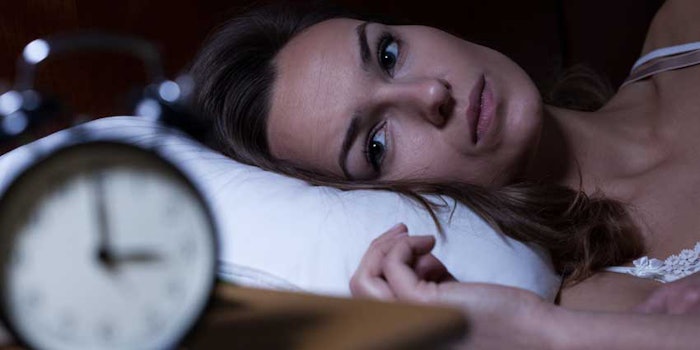
Are your clients feeling tired and less interested in things and have increased sleep and appetite during the winter months? Well, there might be more to what people claim to be "the winter blues"...
According to Medscape, unlike people with classical depression who typically eat less and sleep less, people with seasonal affective disorder (SAD) eat more and sleep more. Plus, many with SAD do not realize that they have depression because they are not necessarily depressed in regards to their mood.
Erin Madigan-Fleck, N.M.D., Naturophoria and Skin Inc. advisory board member, said as many as 14 million people may suffer from SAD or winter blues.
“[SAD is a] sub-type of depression that appears and ends around the same time each year and is related to changes in seasons.” —Erin Madigan-Fleck
There are three categories for SAD:
- SAD major depression
- Fall and winter SAD, also known as winter-onset SAD
- Spring and summer SAD, also known as summer-onset SAD
SAD’s Influence
Despite its discovery in the 19th century, SAD was not recognized in psychiatry until about 1984 and is still frequently misdiagnosed today, explained Madigan-Fleck. The onset of depression begins in September through November and is reduced March through May, affecting men, women, children and pets, she added.5
“The specific cause is largely undecided, but contributing factors may be circadian rhythm, neurotransmitter interference (drop in serotonin and melatonin).” —Erin Madigan-Fleck
She also added risk factors, which include:
- Age
- Family history
- Being female
- Living in colder northern climates or warmer southern climates
- Diagnosis of clinical depression or bipolar disorder
“Complications may be self-limiting, however, family members are affected by the emotional and physical manifestations,” said Madigan-Fleck. “Social withdrawal, school and work problems and substance abuse may develop.”
Serotonin and Melatonin
Serotonin is a neurotransmitter that affects mood and at low levels can be linked to depression. It can be impacted based on reduced level of sunlight during the fall and winter months. Developmental depressive symptoms in winter SAD are associated with defective serotonin levels.2
Brain scans showed individuals with seasonal depression during winter months had higher levels of serotonin transporter protein, which removed serotonin in individuals who did not have seasonal depression, explained Madigan-Fleck.1
For higher levels of serotonin over winter months, receiving sunlight over summer months helps the body maintain higher vitamin D levels in the winter.3
Sleep-related hormone, melatonin is secreted by the pineal gland in the brain and can be linked to seasonal depression.1
“This hormone, which can affect sleep patterns and mood, is produced at increased levels in the dark,” explained Madigan-Fleck. “Therefore, when the days are shorter and darker the production of this hormone increases.”
Furthermore, melatonin can influence an individual's circadian rhythm, or "biological clock," which can result in broken sleep patterns and out of sync internal and external clocks. This can connect to symptoms associated with seasonal depression.1
Symptomology
The list of symptoms for SAD is significant to recognize. Individuals can sometimes feel hopeless or worthless with potential suicidal thoughts, thoughts of death, low or loss of self-esteem, despair and apathy among others. Individuals with SAD will oftentimes find themselves with low energy and feel sluggish, which can also lead to a loss of interest in activities and other hobbies previously enjoyed, explained Madigan-Fleck.
Individuals suffering from SAD can also experience difficulty sleeping or sometimes oversleeping, which can lead to tiredness and irritability. Weight and appetite changes are also affected by SAD, added Madigan-Fleck. Arms and legs can start to feel heavy and sufferers might find decreased interest in contact or sexual activity.
According to Madigan-Fleck, mania (hypomania) can develop in the summer and depression may appear in the winter.
Follow the Blue Light
Previous research proved blue light has a beneficial effect on mood to fight off the winter blues. Blue light is common in outdoor light and is mainly absorbed during summer months, which is why researchers suggest for individuals with SAD to install blue lighting indoors as opposed to the generic yellow lighting. However, blue light should be avoided at night and to help do so, yellow glasses can help filter out the blue wavelengths, such as TV and computer screens, as this can damage sleep patterns.4
Blue light lowers production of melatonin, which prevents individuals from feeling tired. Intrinsically photosensitive retinal ganglion cells transduce photo signals into nerve signals, but instead of the signal going to the visual cortex, it goes to the master clock. These cells are the most responsive to blue light, explained Dan Pardi, researcher.4
“If you can block blue light, you can actually create something called circadian darkness or virtual darkness,” said Pardi. “What that means is you can see, but your brain doesn't think it's daytime; your brain thinks it's in darkness.”4










